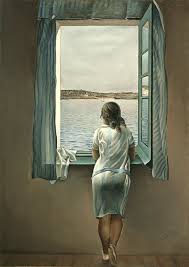Author’s Forward: There are some blog posts that have sat in my bones for too long. They are lessons that seem so simple and so obvious, and so unworthy of anyone’s time. What’s worse is that when I attempt to write about them, I feel narcissistic — I end up becoming the writer where I am the hero of my own story and the lessons I implemented saved the day… and maybe the pet fish’s life. Gross.
But this post, this post is about what saves MY life each and every day. I’m going to do my best not to be annoying, obnoxious, or too geeky, but I won’t make any promises. Because I really believe in this with all I got. And I am kind of a nerd about it.
I didn’t register for college classes the way most kids did. While others were fiddling around with lining up work schedules and drinking habits to class loads attuned to graduation requirements, I researched like crazy. I didn’t have a full-ride scholarship or a college fund, and I knew that I was going to be paying for my degree for years to come. So when I registered for classes, I looked for professors who I knew were going to change me as a person. I wanted a Robin Williams Dead-Poet-Society-Style teacher for every class, if I could, please. And if it were at all possible, could that class be after 10am?
I knew that I would forget the things I was taught, but I wouldn’t forget the passion with which the lessons were taught. And that, that would mean that I would leave the class changed. That seemed like something that money couldn’t really buy, and that might actually be worth going into student debt over.
Three of those classes seeped into the marrow of my soul so much that I can hardly tell where my ideas begin and their lessons end. These three classes were Philosophy of Aesthetics, Practices of Looking, and Film and Looking. The first asked the questions: how do we tell if something is beautiful? What qualities make a piece of art aesthetically pleasing? And how can we create beauty? The other two class used fine arts and popular cultural forms as a way of tracking social movements. They asked questions like: Why do we respond emotionally, artistically, and intellectually to media? And Does what we see affect how we think about the world? (As opposed to previous cultures who relied upon what they heard or were told by leaders).
Both classes were taught by people of integrated faith. By that, I mean that these were not simple-minded professors who wanted to connect everything with God. They were people who looked at the intersection of art, philosophy, sociology, psychology, literature, creativity, life, and music and found that they were holding something sacred. Something that seemed like it was way too precious to be scrutinized, but was far too rare and important to just ignore. You can see why classes like this could change the way you think about life, and humble your own intellectualism in a way that few other arguments could.
I left all three of those classes with a profound truth: For better or for worse, the greatest beauty was one that you cultivated yourself, and which, so moved you, that you changed who you were to accommodate it. And that kind of beauty could literally change the world.
How does that look practically? Well, if you, as an individual found tradition to be beautiful, you would move your body to practice tradition. If you found a certain person beautiful, chances are, you would change your own appearance to be like that person, or find a way to befriend someone like them. In short, beauty would move you from the place that you were to a different reality, and you would go willingly. (Jesus folks, stay with me, I’m not going to go Oprah doctrine on you. I promise.)
Beauty would change your world view. It would change how you saw the world and the movements in it. Encountering beauty would be like encountering a truth that you did not know, but that you wanted to become one with. Which means, that you could also disrupt social movements, long-held ideals, and social and political issues. Beauty was powerful, and it had to have a bigger definition than “pretty” or “pleasing to the eye.” It had to be more than this weak background noise. Beauty was moving us, and we didn’t even know it.
To be continued….

Pingback: Practices of Looking – Part Two – If Beauty is Changing Us, We’d Better Pay Attention | Renew Us
Pingback: Practices of Looking – Final Edition – Making Space for Beauty | Renew Us